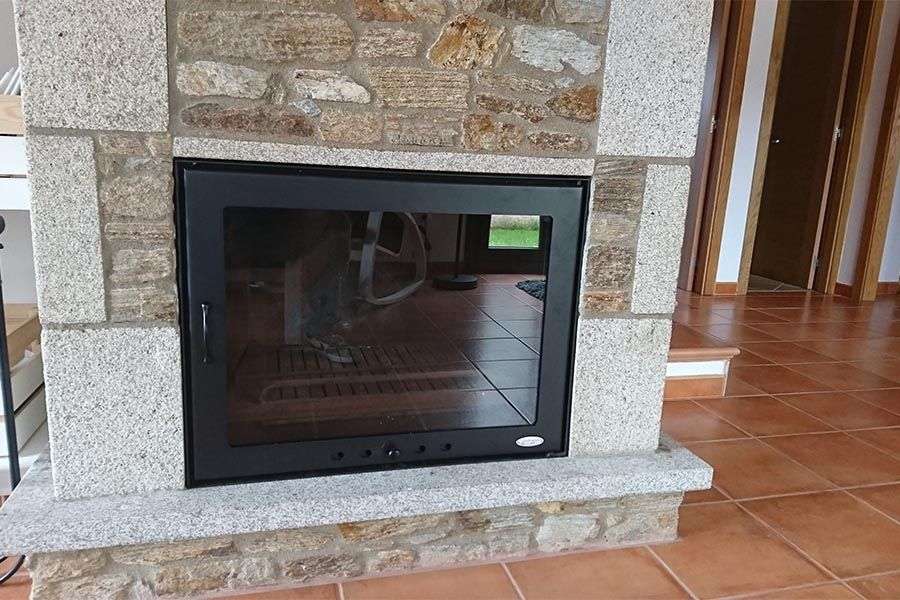
The lining of a fireplace is one of the most important aspects for it, as it greatly influences the energy efficiency and fuel consumption needed. There are different types of linings, although all of them must fulfill two main functions: protect the interior of the fireplace from the action of fire and channel the heat to the appropriate area.
Contenidos:
Main materials used in fireplace linings
The materials that can be used to line a fireplace are mainly the following:
Marble
Marble is a porous material, resistant to direct fire action, which can be relatively easily installed inside a fireplace. The marble stone heats up and stores some of the heat, so even after the fire has been extinguished, the fireplace can still feel warm.
Another advantage of marble lining is that the stone can be custom ordered, and a thicker or thinner thickness can be chosen depending on the level of protection required by the fireplace.
Of all the types of marble, the most commonly used is usually travertine, which is also used on the exterior to make the fireplace more decorative.
Molten Metal
Molten metal cladding is often used for cassettes or insertable chimney systems. They are made as a single piece that fits into the old chimney, or a new complete chimney is made by modules, which are welded and sealed with high temperature resistant putty, in both cases with door to isolate the chimney.
Stainless Steel
Stainless steel is usually limited to the outside of chimneys, especially those to which a bright metallic finish is wanted. However, there can also be interior claddings finished with stainless steel sheets alloyed with other metals to better resist the direct action of fire, which can cause corrosion at extreme temperatures.
Ceramic
Ceramic interior finishes are used for their high resistance to very high temperatures. In fact, space shuttles are finished in this material to resist entry into the atmosphere after being in space, something that subjects the material to thousands of degrees without it losing strength or disintegrating. Therefore, it is one of the ideal claddings for finishing the interior of chimneys.
Paints and fillers
Fireproof paints are used to cover the interior of old and deteriorated chimneys. It’s much more economical than other systems, besides being very easy to apply. With a single layer of paint, the interior of a chimney can be insulated in a few minutes, and once the paint is dry, it withstands very high temperatures.
The filler is used to seal cracks and joint points. Its formula has been developed to withstand extreme temperatures, and is applied in a way that’s as simple as the paint. However, it is not common to find a chimney lining covered only with heat-resistant filler.
Which chimney lining should you choose?
When deciding for one lining or another, the ideal, especially for the exterior part, is that you choose one that integrates with the decoration. In this way, in addition to improving the efficiency of the chimney, your corner will be much more beautiful.



